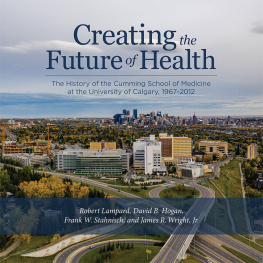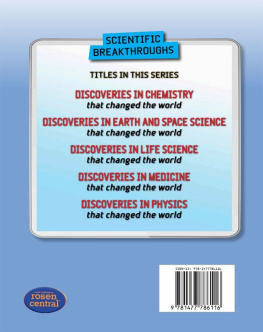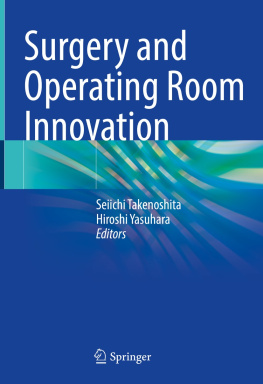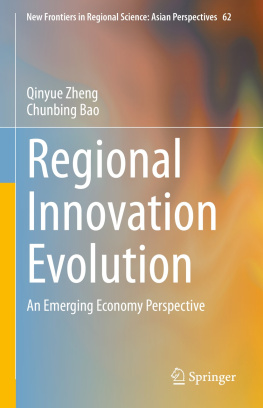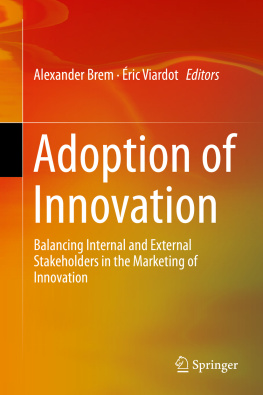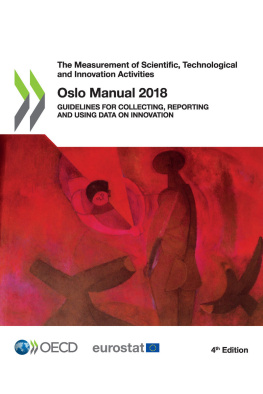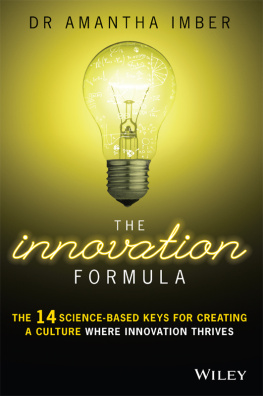From Anesthesia to X-Rays
INNOVATIONS AND DISCOVERIES THAT CHANGED MEDICINE FOREVER
Christiane Nockels Fabbri
Foreword by Sandra Panem, PhD

Copyright 2017 by ABC-CLIO, LLC
All rights reserved. No part of this publication may be reproduced, stored in a retrieval system, or transmitted, in any form or by any means, electronic, mechanical, photocopying, recording, or otherwise, except for the inclusion of brief quotations in a review, without prior permission in writing from the publisher.
Library of Congress Cataloging-in-Publication Data
Names: Nockels Fabbri, Christiane, author. | Panem, Sandra, 1946 writer of foreword.
Title: From anesthesia to X-rays : innovations and discoveries that changed medicine forever / Christiane Nockels Fabbri ; foreword by Sandra Panem.
Description: Santa Barbara, California : ABC-CLIO, LLC, [2017] | Includes bibliographical references and index.
Identifiers: LCCN 2016029285 (print) | LCCN 2016029909 (ebook) | ISBN 9781610695732 (alk. paper) | ISBN 9781610695749 (eISBN) | ISBN 9781610695749 (ebook)
Subjects: | MESH: History of Medicine | Inventions | Diffusion of Innovation
Classification: LCC R702 (print) | LCC R702 (ebook) | NLM WZ 40 | DDC 616.009dc23
LC record available at https://lccn.loc.gov/2016029285
ISBN: 978-1-61069-573-2
EISBN: 978-1-61069-574-9
21 20 19 18 17 1 2 3 4 5
This book is also available as an eBook.
Greenwood
An Imprint of ABC-CLIO, LLC
ABC-CLIO, LLC
130 Cremona Drive, P.O. Box 1911
Santa Barbara, California 93116-1911
www.abc-clio.com
This book is printed on acid-free paper 
Manufactured in the United States of America
This book is dedicated
To the teachers and students who inspired me, and
To my father, who taught me a critical spirit.
Foreword
We live in an era where science and technology are rapidly changing all aspects of how we live, work, travel, and communicate. On an almost daily basis we learn of advances in medicine and how as consumers we can take control of our health. Paradoxically, we learn of deadly new diseases, of which Ebola and Zika are two examples. Further, many diseases remain without effective treatment, let alone cures. And although modern medicine leads to an increased life span, there is an alarming increase in the prevalence of diseases that accompany longevity.
How can we make sense of technological and scientific news? Are the findings incremental or revolutionary? Will they change the course of medicine or be forgotten? Christiane Nockels-Fabbris From Anesthesia to X-Rays: Innovations and Discoveries That Changed Medicine Forever provides a welcome framework in which to understand medical innovation.
Written from the perspective of a historian of medicine, Nockels-Fabbri has selected 50 discoveries made from 1796 to 2007 that truly changed the course of medicine. An essay for each describes the discovery; explains how, where, when, and by whom it was made; and most importantly, why it was important. Each entry includes a bibliography and suggested reading list.
The entries are well written, and even the most complex technologies are easily accessible. The holy grail of medical research is to find an effective treatment or cure for a disease. Often the fundamental breakthrough to finding the treatment or cure comes through the understanding enabled by a seemingly unrelated piece of technology. Nockels-Fabbri describes especially well the role of instrumentation in the progress of medical research. For example, the thermometer is a most profound innovation.
In addition to the essays, the book includes a wonderful timeline of medical innovation spanning thousands of years. A series of sidebars provides cultural context for many of the discoveries.
This book can be used in many ways. It is an invaluable resource for students of history, medicine, and science as the beginning inquiry into a particular discovery. For the professional or layperson, it provides an overview of the history of medicine. All readers are likely to return to this book many times.
Sandra Panem, PhD
NeuroNetworksFund
New York, NY
May 2016
Acknowledgments
I am grateful to allfriends, family, colleagues, and patientswho supported my work.
First and foremost, I owe thanks to my husband, Remo Fabbri, for his ongoing encouragement, patient commentary, and incisive insights. He added broad experience and historical background, which helped guide and enrich my research.
I am indebted to my friend and colleague, Mary K. K. Yearl, who gave generous advice and valuable assistance in my early exploration of this project.
Gian D. Fabbri contributed his own much-appreciated time and expertise, and an important entry on a topic near to his heart: Cardiopulmonary Resuscitation, CPR.
I owe a special debt of thanks to my editor, Maxine Taylor, for her guidance and unflagging forbearance; without her, this project would not have come to fruition.
Throughout, my research was supported by the rich resources of the Yale University Library and by its staff, always helpful and willing to go the extra mile.
Introduction
For the student of medicine and history, as for the scientific researcher and medical practitioner, the subject of medical innovation is extremely important. The study of innovations helps explain historical evolution in medicine and the major transformations we have witnessed in population health and life expectancies in recent times. Ongoing developments in immunology, genetics, stem cell research, laboratory tests, and imaging diagnostics challenge traditional understandings of healthcare for patients and practitioners alike. At the same time, as new practices and technologies come into being, they raise important issues for communities and social systems. Here, the role of innovation in limiting healthcare costs while improving outcomes is both critical and controversial.
Yet, the subject of innovation and discovery has been relatively understudied. Reading through this books short list of medical innovations and discoveries will quickly demonstrate why:
- Innovations and discoveries in medicine or healthcare span a broad range of complex fields and technologies.
- Important discoveries are not always recognized when they occur; their scientific merit or therapeutic significance may take a long time to be validated by experience.
- Innovation aims to solve a problem or results in problem solving often accidentally. This process can at times be entirely serendipitous. Great innovations may solve long-standing problems, or they may open up entire new fields of scientific research.
- By definition, innovation runs counter to tradition and to accepted practice or teaching; it may thus face resistance or even frank opposition from entrenched forces in various parts.
- Successful innovation is often the outcome of competitive research and as such may be fraught with professional disputes or conflicts at times compounded by international rivalries. Therefore, attributing or apportioning just credit can be complicated and may require revision of established historical narratives.
Innovation, defined as the introduction of something newa new concept, method, or practicecomes from the Latin verb innovare (inin, or intoand novusnew). Hence, what is new intends to change what is established. Medical innovation changes existing scientific understandings or therapeutic practices. It can also apply to organizational structures or business models aiming to improve healthcare quality, delivery, or access or to reduce healthcare disparities.
Next page

